Usha Seejarim
A solo exhibition
20 Sep 2020 - 21 Feb 2021
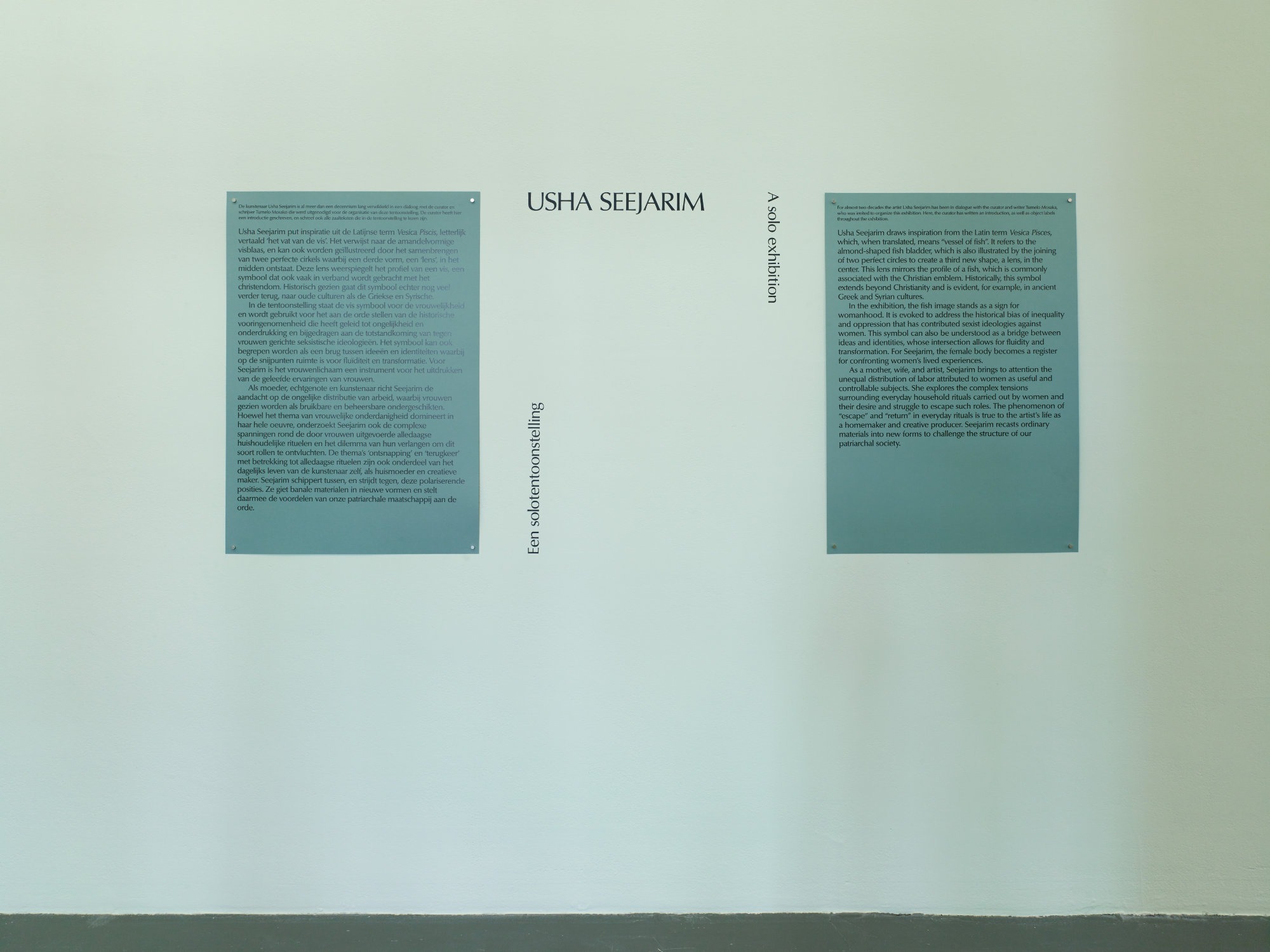
Exhibition overview Usha Seejarim, a solo exhibition, 2020, at Kunstinstituut Melly, Rotterdam. Photographer: Kristien Daem.

Usha Seejarim, Nesting, 2019, installation clusters of grass and broom heads, courtesy the artist. Exhibition overview Usha Seejarim, a solo exhibition, 2020, at Kunstinstituut Melly, Rotterdam. Photographer: Kristien Daem.

Usha Seejarim, Nesting, 2019, installation clusters of grass and broom heads, Creature of Habit 01, 2020, iron base plate and steel, and Attire, iron base and wooden broom handles, 2020, all courtesy the artist. Exhibition overview Usha Seejarim, a solo exhibition, 2020, at Kunstinstituut Melly, Rotterdam. Photographer: Kristien Daem.

Usha Seejarim, Creature of Habit 01, 2020, iron base plate and steel, and Attire, iron base and wooden broom handles, 2020, both courtesy the artist. Exhibition overview Usha Seejarim, a solo exhibition, 2020, at Kunstinstituut Melly, Rotterdam. Photographer: Kristien Daem.
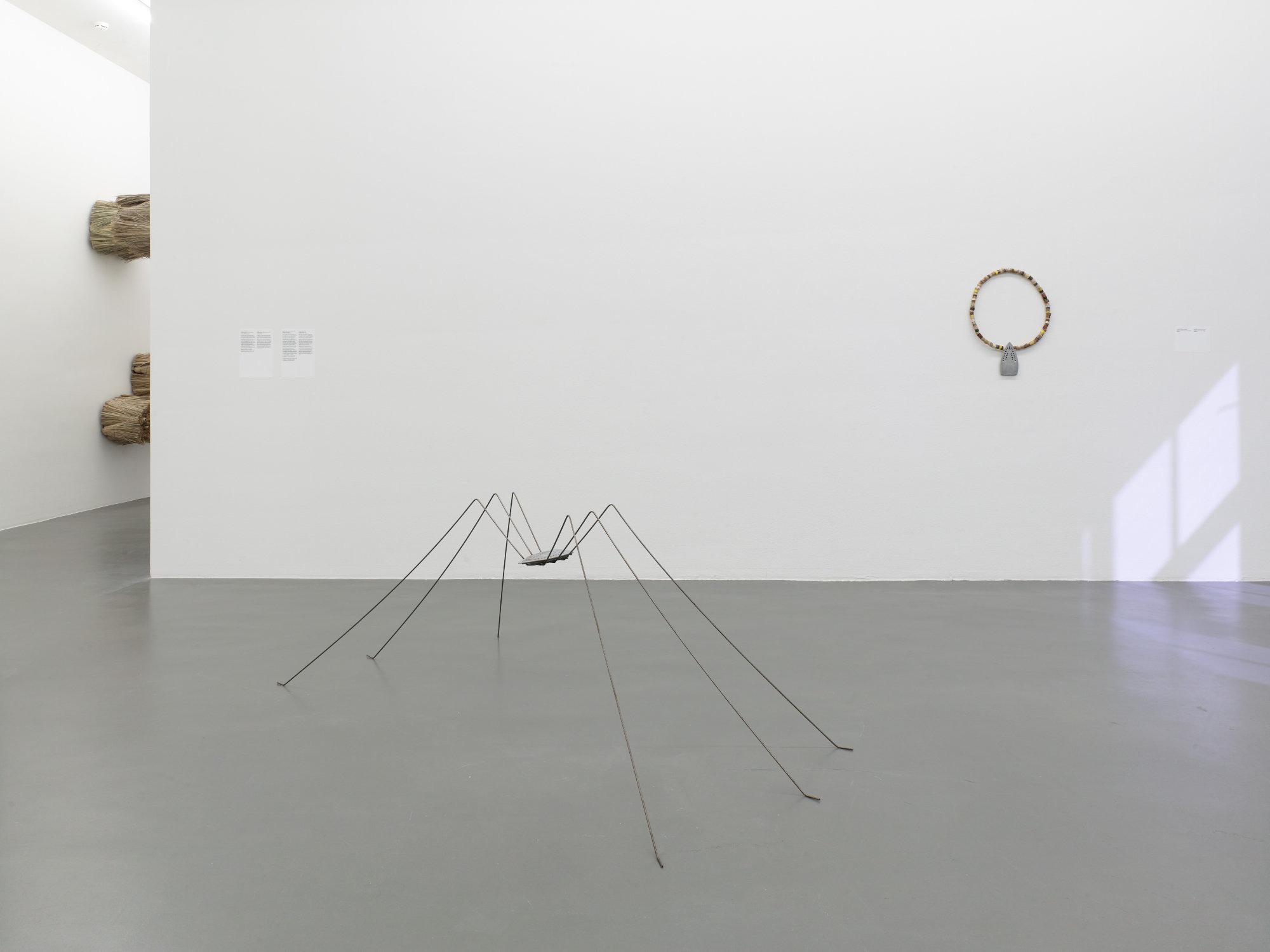
Usha Seejarim, Nesting, 2019, installation clusters of grass and broom heads, Creature of Habit 01, 2020, iron base plate and steel, and Attire, iron base and wooden broom handles, 2020, all courtesy the artist. Exhibition overview Usha Seejarim, a solo exhibition, 2020, at Kunstinstituut Melly, Rotterdam. Photographer: Kristien Daem.
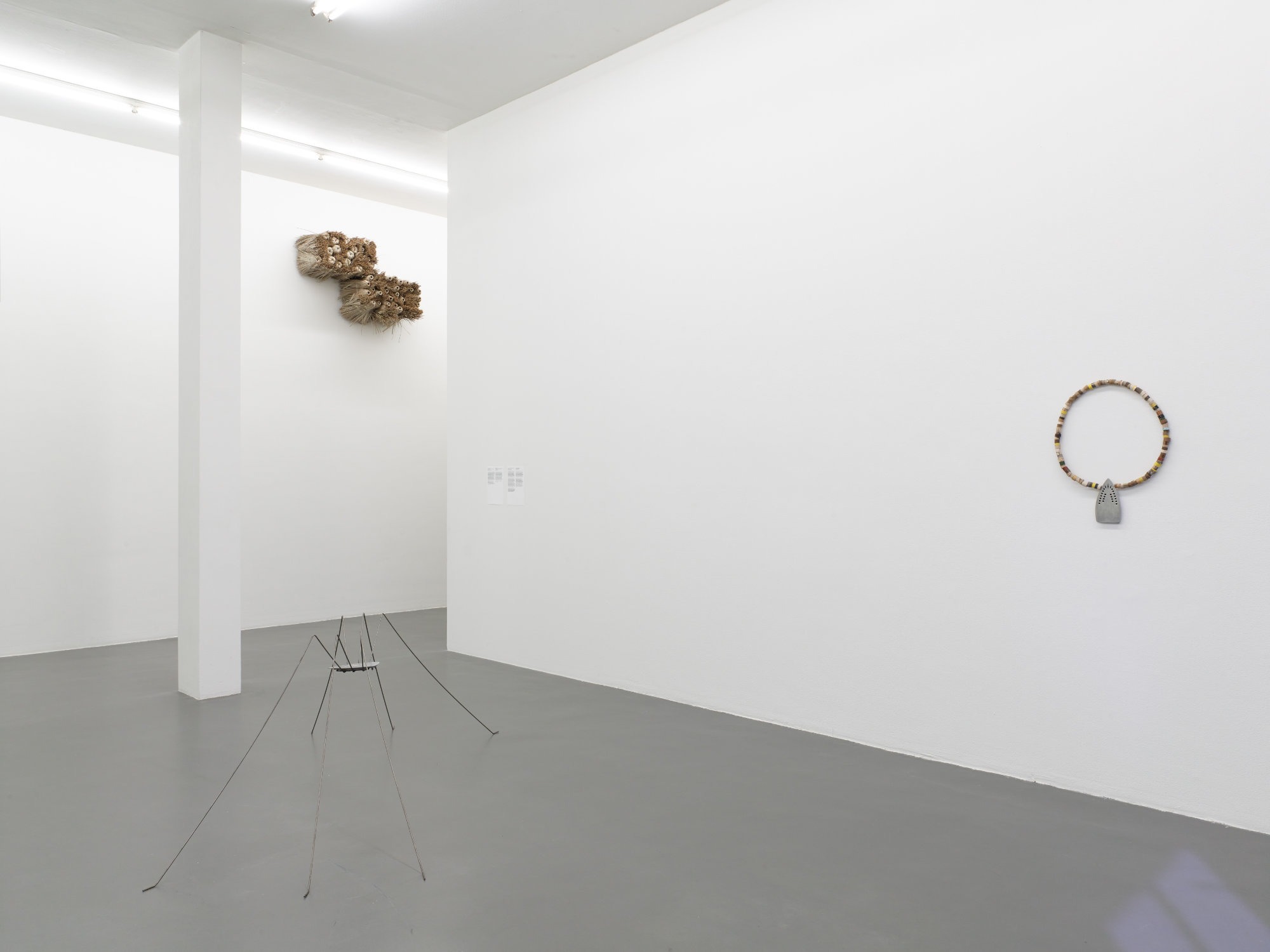
Usha Seejarim, Nesting, 2019, installation clusters of grass and broom heads, Creature of Habit 01, 2020, iron base plate and steel, and Attire, iron base and wooden broom handles, 2020, all courtesy the artist. Exhibition overview Usha Seejarim, a solo exhibition, 2020, at Kunstinstituut Melly, Rotterdam. Photographer: Kristien Daem.
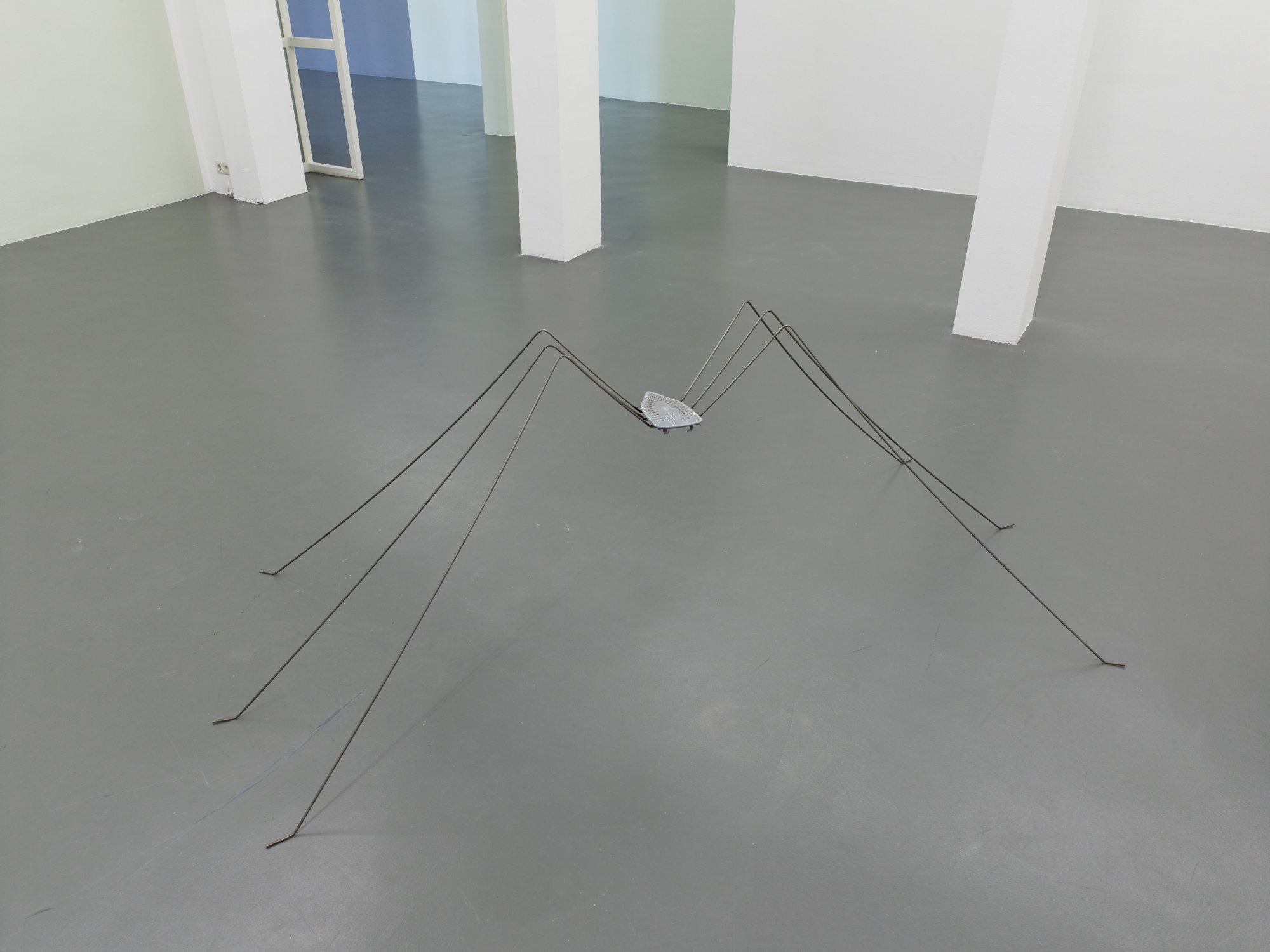
Usha Seejarim, Creature of Habit 01, 2020, iron base plate and steel, courtesy the artist. Exhibition overview Usha Seejarim, a solo exhibition, 2020, at Kunstinstituut Melly, Rotterdam. Photographer: Kristien Daem.
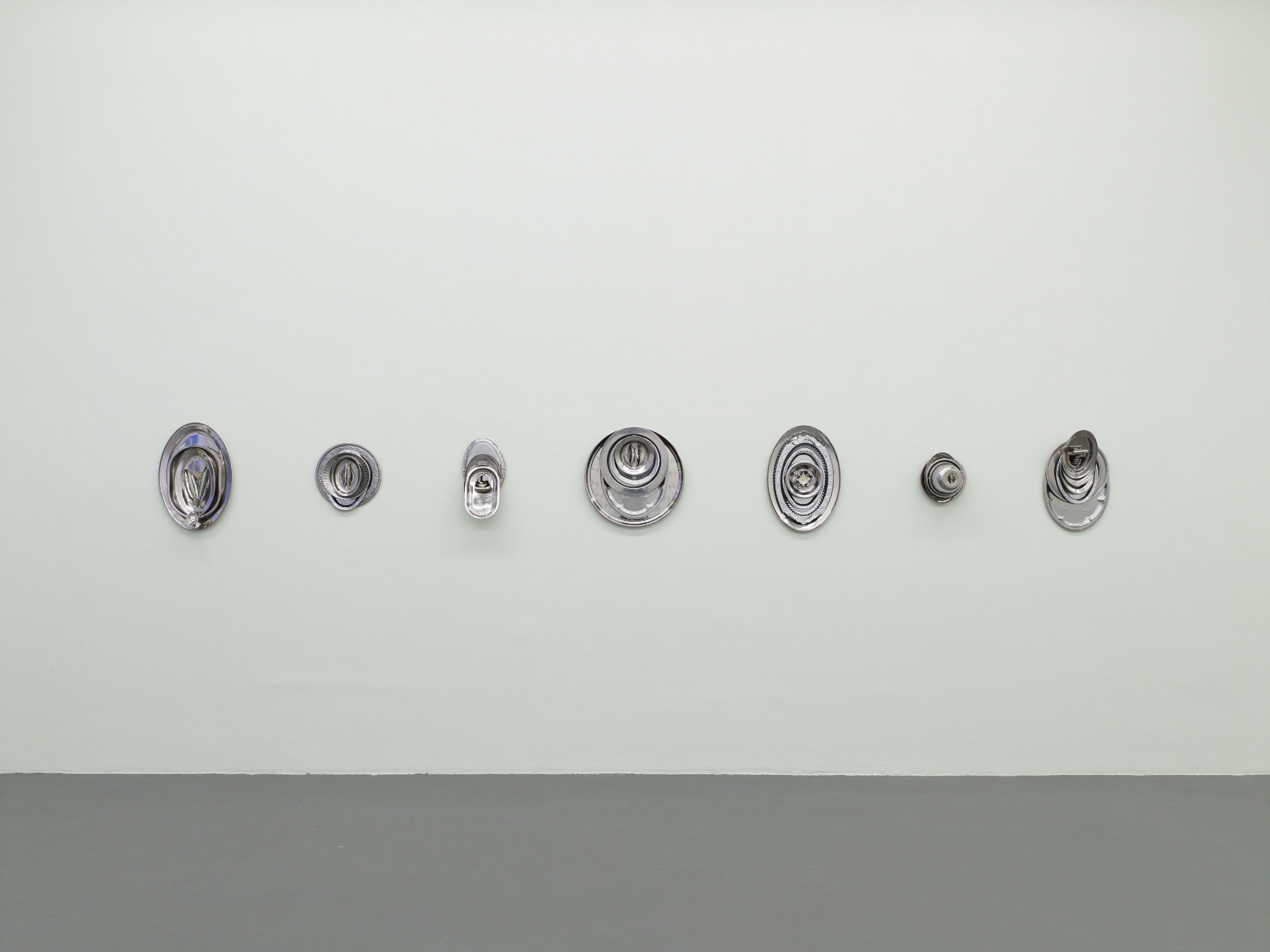
Usha Seejarim, Servitude Series, 2019-2020, 7 metal trays, courtesy the artist. Exhibition overview Usha Seejarim, a solo exhibition, 2020, at Kunstinstituut Melly, Rotterdam. Photographer: Kristien Daem.
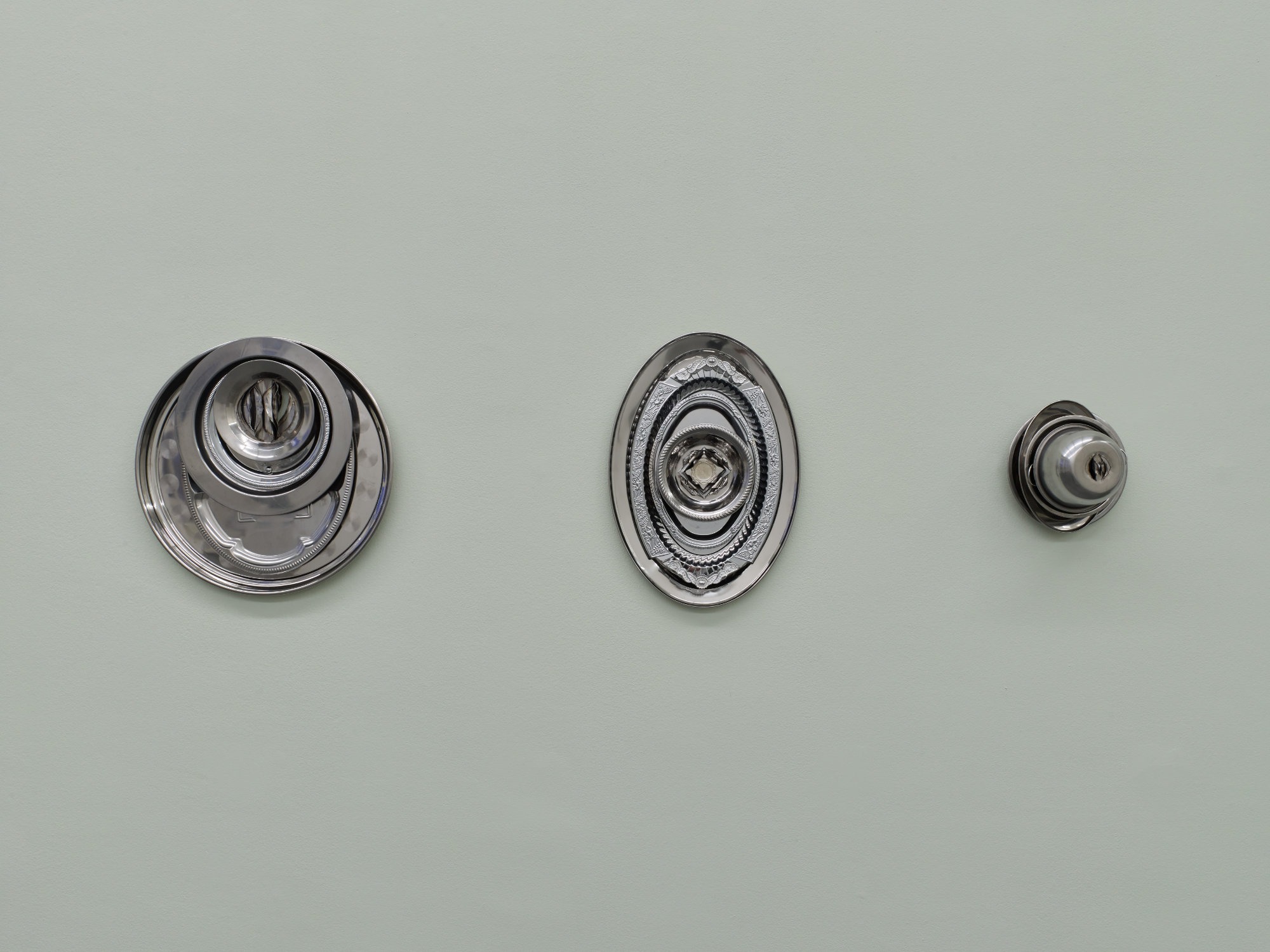
Usha Seejarim, Servitude Series, 2019-2020, 7 metal trays, courtesy the artist. Exhibition overview Usha Seejarim, a solo exhibition, 2020, at Kunstinstituut Melly, Rotterdam. Photographer: Kristien Daem.
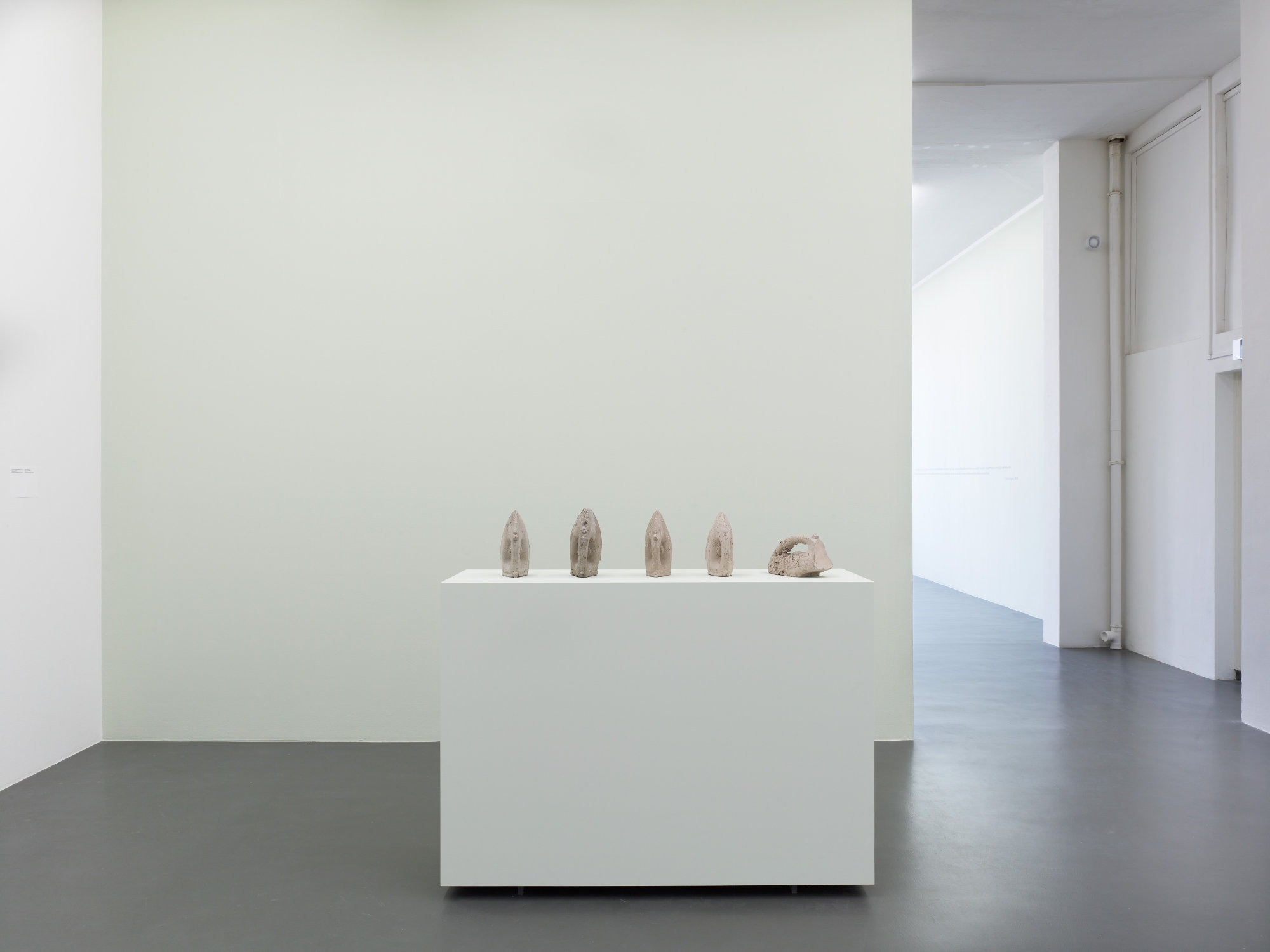
Usha Seejarim, Cast Iron series, 2018, no. 1, 2, 3, 4, 7 (series of 7), cement cast, courtesy the artist and Smac Gallery. Exhibition overview Usha Seejarim, a solo exhibition, 2020, at Kunstinstituut Melly, Rotterdam. Photographer: Kristien Daem.
For over a decade the artist Usha Seejarim has been in dialogue with the curator and writer Tumelo Mosaka, who was invited to organize this exhibition. Here, the curator has written an introduction, as well as gallery texts throughout the exhibition.
Usha Seejarim draws inspiration from the Latin term Vesica Piscis, which translated means, “vessel of fish”. It refers to the almond-shaped fish bladder, while also illustrated by the joining of two perfect circles to create a third lens in the center. This lens mirrors the profile of a fish, which is commonly associated with the Christian emblem. Historically, this image extends beyond Christianity to include ancient cultures such as the Greek and Syrian. An example is the word “fish” and “womb,” which exist interchangeably in these cultures. The meaning relies on various associations to reveal either concrete or metaphorical understanding. Seejarim is invested in multiple definitions of objects where symbolic meaning is not limited, but instead relies on the changing context. Most of her work focuses on the critique of gender and identity politics affecting women.
In the exhibition, the fish image stands as a sign of womanhood. It is evoked to address the historical bias of inequality and oppression that has contributed sexist ideologies against women. This symbol can also be understood as a bridge between ideas and identities where intersection allows for fluidity and transformation. For Seejarim, the female body is a register for confronting women’s lived experiences. While the representation of the physical body itself is absent, it is signified through anatomical fragmentation such as in the shape of a vagina and earlobe. Moreover, the material choice of household objects such as cloth pegs and wooden brooms also connects the body to socially constructed gender roles.
As a mother, wife, and artist, Seejarim brings into attention the unequal distribution of labor attributed to women as useful and controllable subjects. While the issue of female subjectivity is prevalent throughout her work, Seejarim explores the complex tensions surrounding everyday household rituals done by women and their desire and dilemma to escape such roles. The phenomenon of “escape” and “return” in everyday rituals is true to the artist’s life as a homemaker and creative producer. Seejarim negotiates between and against these polarizing positions by recasting ordinary materials into new forms that challenge the benefits of our patriarchal society.
This is the artist’s first exhibition in the Netherlands. The exhibition is coordinated by Wendy van Slagmaat-Bos.
Curator: Tumelo Mosaka
Usha Seejarim draws inspiration from the Latin term Vesica Piscis, which translated means, “vessel of fish”. It refers to the almond-shaped fish bladder, while also illustrated by the joining of two perfect circles to create a third lens in the center. This lens mirrors the profile of a fish, which is commonly associated with the Christian emblem. Historically, this image extends beyond Christianity to include ancient cultures such as the Greek and Syrian. An example is the word “fish” and “womb,” which exist interchangeably in these cultures. The meaning relies on various associations to reveal either concrete or metaphorical understanding. Seejarim is invested in multiple definitions of objects where symbolic meaning is not limited, but instead relies on the changing context. Most of her work focuses on the critique of gender and identity politics affecting women.
In the exhibition, the fish image stands as a sign of womanhood. It is evoked to address the historical bias of inequality and oppression that has contributed sexist ideologies against women. This symbol can also be understood as a bridge between ideas and identities where intersection allows for fluidity and transformation. For Seejarim, the female body is a register for confronting women’s lived experiences. While the representation of the physical body itself is absent, it is signified through anatomical fragmentation such as in the shape of a vagina and earlobe. Moreover, the material choice of household objects such as cloth pegs and wooden brooms also connects the body to socially constructed gender roles.
As a mother, wife, and artist, Seejarim brings into attention the unequal distribution of labor attributed to women as useful and controllable subjects. While the issue of female subjectivity is prevalent throughout her work, Seejarim explores the complex tensions surrounding everyday household rituals done by women and their desire and dilemma to escape such roles. The phenomenon of “escape” and “return” in everyday rituals is true to the artist’s life as a homemaker and creative producer. Seejarim negotiates between and against these polarizing positions by recasting ordinary materials into new forms that challenge the benefits of our patriarchal society.
This is the artist’s first exhibition in the Netherlands. The exhibition is coordinated by Wendy van Slagmaat-Bos.
Curator: Tumelo Mosaka
